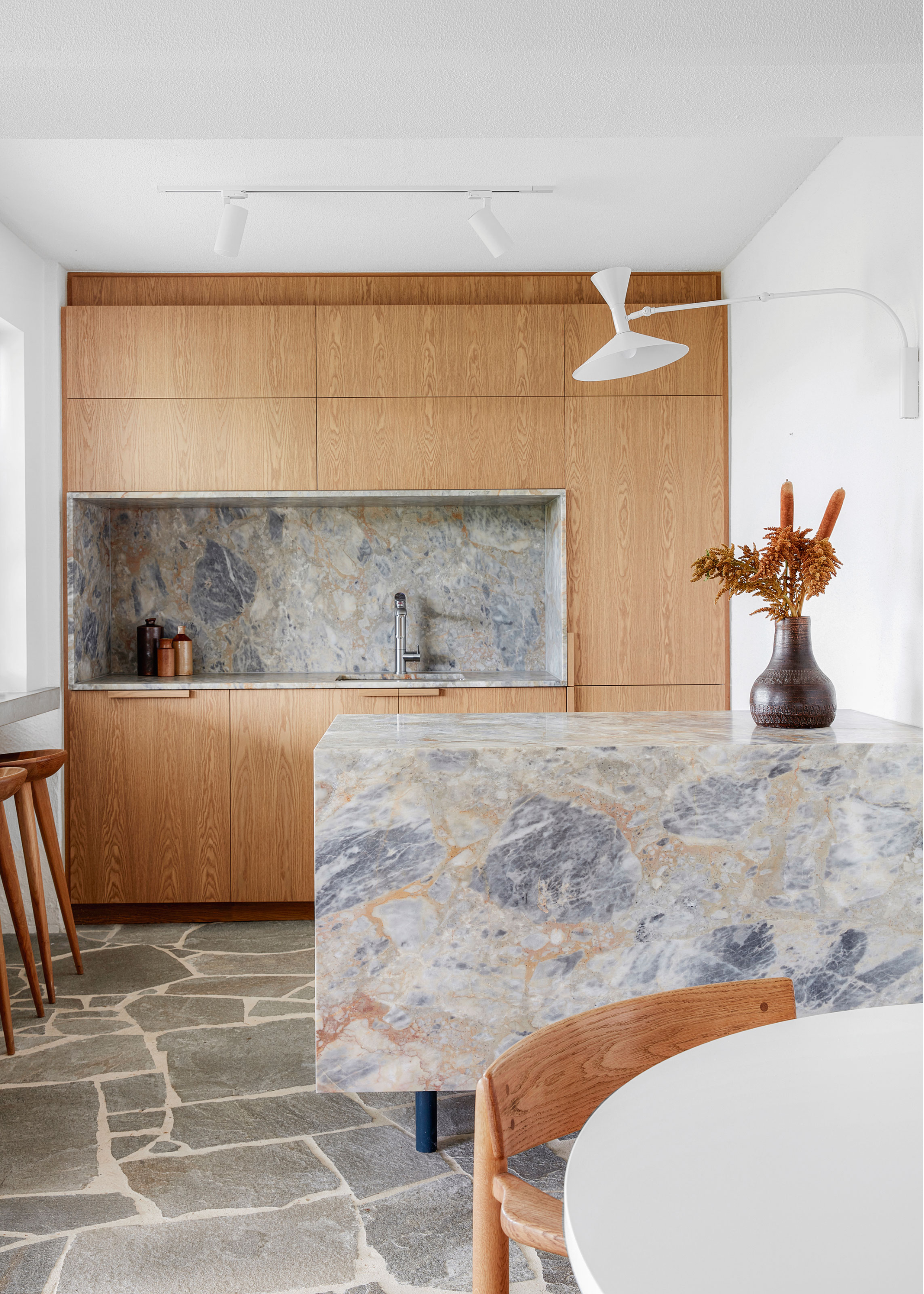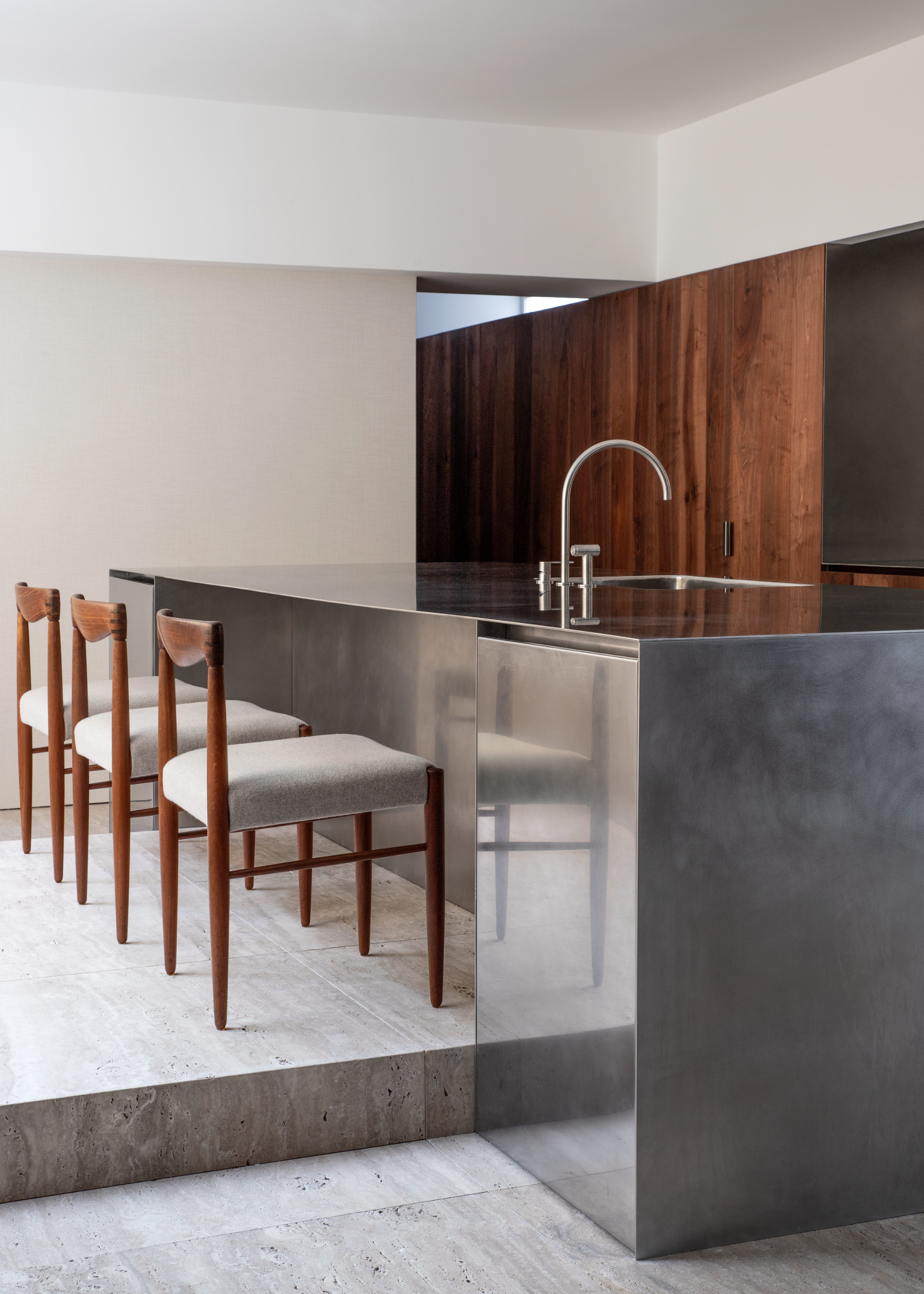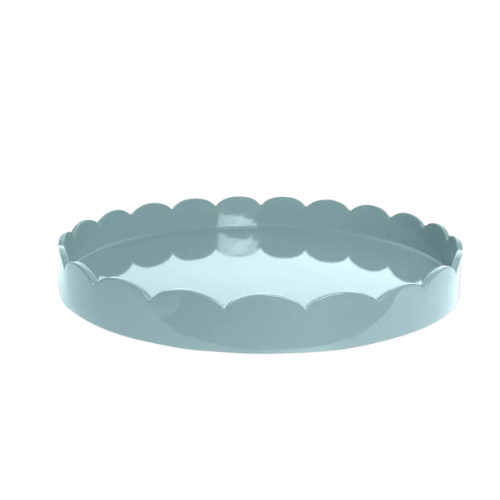Kitchen Island vs Peninsula — Which Is Better and Which Are Designers Choosing in 2025?
The experts debate whether you should choose an island or a peninsula, and they don't mean for your next holiday destination


They say the kitchen is the heart of the home, and who are we to disagree? But, what then, is the heart of the kitchen?
In our mind, that spot has long been taken by the kitchen island, the central anchor in any cooking area, and a much-debated feature in modern kitchen ideas. And if there wasn't already enough discussion around the necessity of the kitchen island, we're here to add a new layer to the conversation. That's right, we're throwing the kitchen peninsula into the mix.
While a kitchen island typically stands proud in the center of your kitchen, the peninsula takes a slightly different approach. Best described as the kitchen island's smaller, less independent, and younger sibling, the peninsula projects out from an existing set of counters, forming an L- or U-shaped configuration of cabinets.
For the experts we asked, the kitchen island still wins out over the peninsula, but the choice between the two can significantly impact both the appearance and functionality of your kitchen area, so it's not one you should make lightly. Luckily, our experts have plenty of thoughts on the topic, so you don't have to make your decision on your own.
What Is the Difference?

Glass-fronted drawers add more dimension to this peninsula kitchen design.
Before we can properly compare the styles, we must establish the basics: what are the actual differences between a kitchen island and a peninsula?
Starting with an island, the more common of the two designs.
This is described by Claire Garner, from Claire Garner Design Studio, as follows: "A kitchen island is a freestanding piece of furniture, typically positioned at the center of the kitchen. It provides valuable additional workspace, storage, and often includes seating, making it a multifunctional element within the room. Because it is accessible from all sides, it encourages a natural flow through the space and helps to create a sociable, open-plan environment."
The Livingetc newsletters are your inside source for what’s shaping interiors now - and what’s next. Discover trend forecasts, smart style ideas, and curated shopping inspiration that brings design to life. Subscribe today and stay ahead of the curve.
This definition of a freestanding, centrally located, fully accessible unit is the widely accepted and acknowledged understanding of the kitchen staple. Some definitions, however, may include slight variations on this description.
For example, Helen Parker from DeVOL says, "We call them ‘islands’ if they have cupboards with storage, maybe a dishwasher or a fridge, and sometimes they can even have a sink or hob."
While this definition invites the debate on whether or not hobs belong on an island, it also adds another level to our understanding of what a kitchen island is.
A peninsula, on the other hand, is a slightly less popular design style, though equally useful in its function.
“Unlike a central island, which is freestanding and usually positioned in the middle of the room, a peninsula island is connected to a wall at one end," explains Alex Main, from The Main Company, "This style is especially favorable in small kitchens, offering the larger island feel but scaled-down."
This space-saving solution maximizes surface area and storage space while ensuring there's still plenty of space to move around, something you lose with a traditional kitchen island.
Established by his father back in 1978, The Main Company’s kitchen designs bring authentic character and charm to today’s homes with unique textures and finishes. Combining organic design and meticulous craftsmanship, The Main Company pride themselves on using the very best in new, salvaged and reclaimed materials to create custom-made products which abound with individuality.
When to Choose An Island

A central island offers the opportunity to make a statement in your kitchen design.
The most defining factor of whether or not a kitchen island is the right decision for your space is, without a doubt, entirely dependent on the size of your kitchen.
As Claire says, "I would always recommend an island in a larger kitchen where there is sufficient space to move comfortably around all four sides."
A central kitchen island is a classic, inoffensive design, a staple in many modern kitchens. The only time when this look doesn't work is when there is not enough space to physically accommodate the addition.
"If the kitchen has enough circulation space — typically 42 to 48 inches around all sides — I usually recommend an island," explains Adina Hall, from Adina Hall Design.
The benefit of a kitchen island is that it centralizes your space, offering a complete and distinct space for cooking and any other activities. It becomes the hub for activity in your home, the focal point of your entire home design.
"It works beautifully as a central feature, allowing the cook to remain connected to family or guests," says Claire, "In open-plan kitchens, it also helps to subtly zone different areas, providing a balance between function and flow."
This is especially useful for any seasoned hosts who frequently find themselves slaving away over the stove while their guests are in the other room, laughing over cocktails.
Claire has over 15 years’ experience in the interior design industry, and over a decade running her own interior design studio. She believes in designing spaces which are tailored just for you, by getting a full understanding of how you live your life, and how you want your home to feel.
When to Choose a Peninsula

A small peninsula attached to the wall in an open plan living area can provide some degree of separation.
If islands are better for larger kitchens, then peninsulas are the top choice for, you guessed it, smaller kitchen designs.
By building onto existing cabinet space, these designs allow you to add more storage to your design in a way that doesn't leave the room feeling awkward or cramped.
"A peninsula island doesn’t require the space that a central island does, so it’s a better choice for those with limited space who still require the storage," explains Alex.
These designs typically adopt an L-shaped counter design, which not only adds more surface area but also acts as a great way to 'zone' your kitchen, a particularly useful tool in open-plan homes, where you may feel a lack of defined areas.
"Due to their design, they are a great way to subtly zone a kitchen without the need for walls and doors, whilst still remaining open plan and spacious," Alex says.
A peninsula helps expand the possibilities of smaller kitchens, stretching them beyond their limitations and offering a glimpse into the opportunities available within your space.
As Claire says, "Because it connects to existing cabinetry, it takes up less floor space while still offering many of the same practical benefits as an island. It can also be a lovely way to create separation between the kitchen and dining areas without the need for a physical barrier."
It also makes for a more laid-back, social kitchen layout, free from the harsh barriers of additional walls. A peninsula acts as a middle ground, offering the necessary separation of a wall, without the restrictions.
"In smaller kitchens, I often recommend combining a peninsula layout with light-reflective materials, such as glazed tiles or marble-effect surfaces, and incorporating open shelving to enhance the feeling of space and light," suggests Claire.
With the right use of materials and colors, as suggested by Claire, this design can also help make smaller kitchens look and feel larger.
Which One Do the Experts Prefer?

Choose a contrasting material for your kitchen island to create a striking, modern look.
"If the layout allows, I love including a kitchen island," admits Claire, "It creates a natural gathering place for family and friends, offers ample storage and prep space, and lends a sense of balance to the overall design."
And Claire is not alone in her preference. The kitchen island is a time-honored favorite, for good reason, too. It provides plenty of room for creativity, with a whole new surface to experiment with. It also provides an attractive focal point to your space, drawing your eye to the centre of the room.
"A freestanding island allows for more creativity with the design," Alex notes, "With a peninsula, as it is connected to the rest of the kitchen, the design and materials generally need to match for a cohesive space. With a central island, you have more flexibility and can opt for different color cabinetry or worktop material, for example."
This sense of freedom in the design process can ultimately result in a more visually intriguing space, with more depth and personality, something that may be lacking in a peninsula kitchen.
It's for these reasons that Adina also tends to feature islands in her designs.
As she describes, "At Adina Hall Design, we love a sculptural island that anchors the space — especially one featuring a bold statement stone that is different than the rest of the kitchen, or surrounded in tactile materials like tambour wood or featuring unique sculptural support elements."
So, while a peninsula may be the better option for those short on space, our experts unanimously agree that the classic island still reigns supreme when it comes to stylish kitchen designs.
The real question, though, is how that island should look. Should you opt for a square kitchen island? Alternatively, a split-level island might be a better fit for your space.

Maya Glantz is a Design Writer at Livingetc, covering all things bathrooms and kitchens. Her background in Art History informed her love of the aesthetic world, and she believes in the importance of finding beauty in the everyday. She recently graduated from City University with a Masters Degree in Magazine Journalism, during which she gained experience writing for various publications, including the Evening Standard. A lover of mid-century style, she can be found endlessly adding to her dream home Pinterest board.


